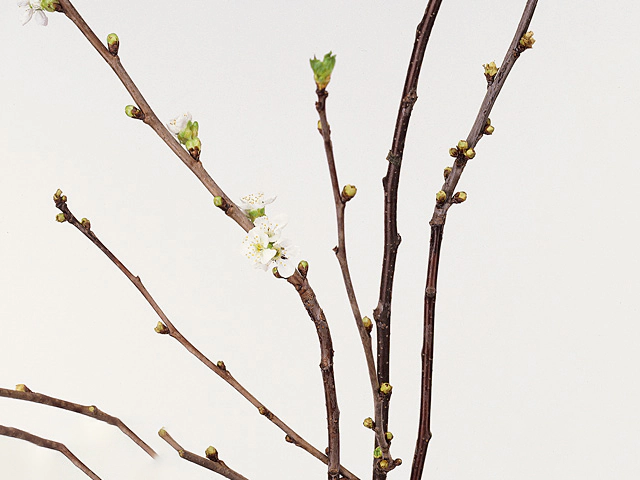Prunus cerasus Morel

| Flower type | Single |
| Fruit type | Drupe |
| Flower scent | Unscented |
| Leaf type | Foliage leaf |
| Winter hardness | Good (USDA-zone 5, 6) |
| Flower color | White-white-155C; White |
| Flower diameter | 1,5 - 2 cm |
| Leaf duration | Deciduous |
| Leaf division | Simple |
| Leaf, main color | Dark green |
| Toxicity (if consumed) | Not or barely |
| Moisture requirements | Well-drained; Moist |
The Prunus cerasus, commonly known as the sour cherry or Morel cherry, is a versatile fruit tree that is popular amongst gardeners and fruit enthusiasts. This article will provide an overview of the characteristics and cultivation requirements of the sour cherry tree.
The sour cherry tree produces beautiful single flowers that are unscented. The flower color varies from white to a slightly creamy hue. The flowers are small, typically 1.5 to 2 cm in diameter, but they create an attractive display when the tree is in bloom. The tree's foliage consists of simple, dark green leaves that add aesthetic value to the landscape.
One of the key features of the sour cherry tree is its winter hardiness. It can thrive in USDA hardiness zones 5 and 6, making it suitable for colder regions. This means that the sour cherry tree can withstand harsh winter conditions and still produce an abundant harvest in the following growing season.
Sour cherries are well-known for their tart taste, which makes them an excellent ingredient in various culinary creations. They are commonly used in baking, jams, and sauces, and their rich flavor adds a unique twist to many dishes. While the fruit is known for its sourness, some cultivars have a slightly sweeter taste, satisfying different palates.
The fruit of the sour cherry tree is a drupe, a type of fruit that contains a single seed surrounded by a fleshy exterior. Drupe fruits are commonly found in various fruit trees, including peaches and plums. The sour cherry tree produces medium-sized cherries that are perfect for fresh consumption or culinary use.
When it comes to toxicity, the sour cherry tree is not or barely toxic if consumed. This means that the fruit can be safely enjoyed by humans and most animals. However, it is always recommended to exercise caution and moderation when consuming any fruit or plant material.
In terms of moisture requirements, the sour cherry tree prefers well-drained soil. It is essential to ensure that excess water does not accumulate around the roots, as this can lead to root rot. While the tree can tolerate moist conditions, it is best to provide it with a well-drained environment to promote healthy growth and prevent water-related issues.
Cultivating a sour cherry tree can be a rewarding experience for gardeners. With proper care and maintenance, this tree can provide a bountiful harvest of delicious cherries each season. Ensure the tree is planted in a suitable location that receives sufficient sunlight, provide regular pruning to maintain its shape and health, and monitor its moisture requirements.
In conclusion, the Prunus cerasus, or sour cherry tree, is a versatile and resilient fruit tree that adds beauty and flavor to any garden or landscape. Its single white flowers and dark green foliage create an attractive visual display, while the tart cherries are beloved for their culinary uses. With its winter hardiness and adaptability to various growing conditions, the sour cherry tree is an excellent addition to any garden.
Market availability index by month:
| Jan. | Feb. | Mar. | Apr. | May | Jun. | Jul. | Aug. | Sep. | Oct. | Nov. | Dec. |
|---|---|---|---|---|---|---|---|---|---|---|---|
| 4 | 3 | 3 | 2 | 1 | - | - | - | - | - | 1 | 2 |